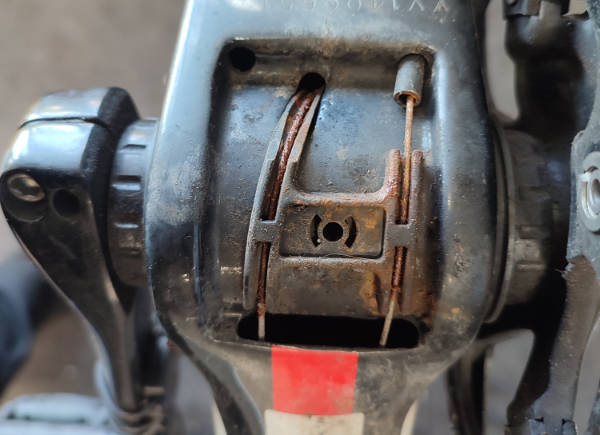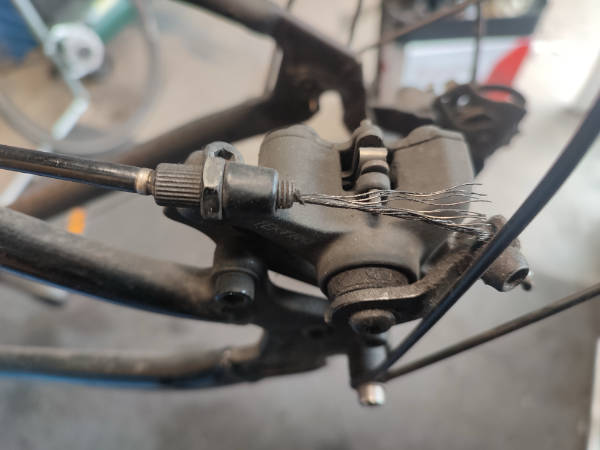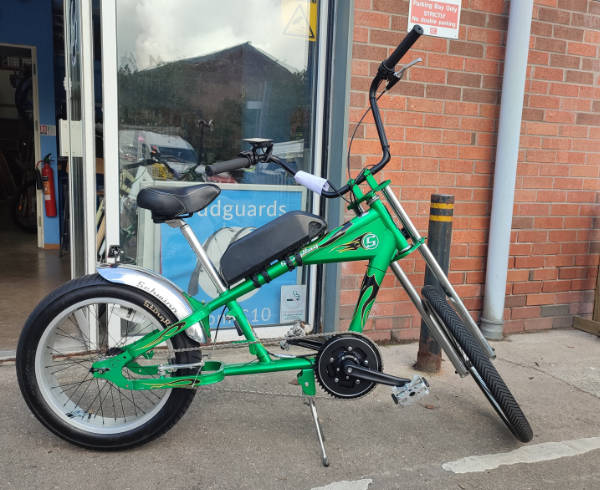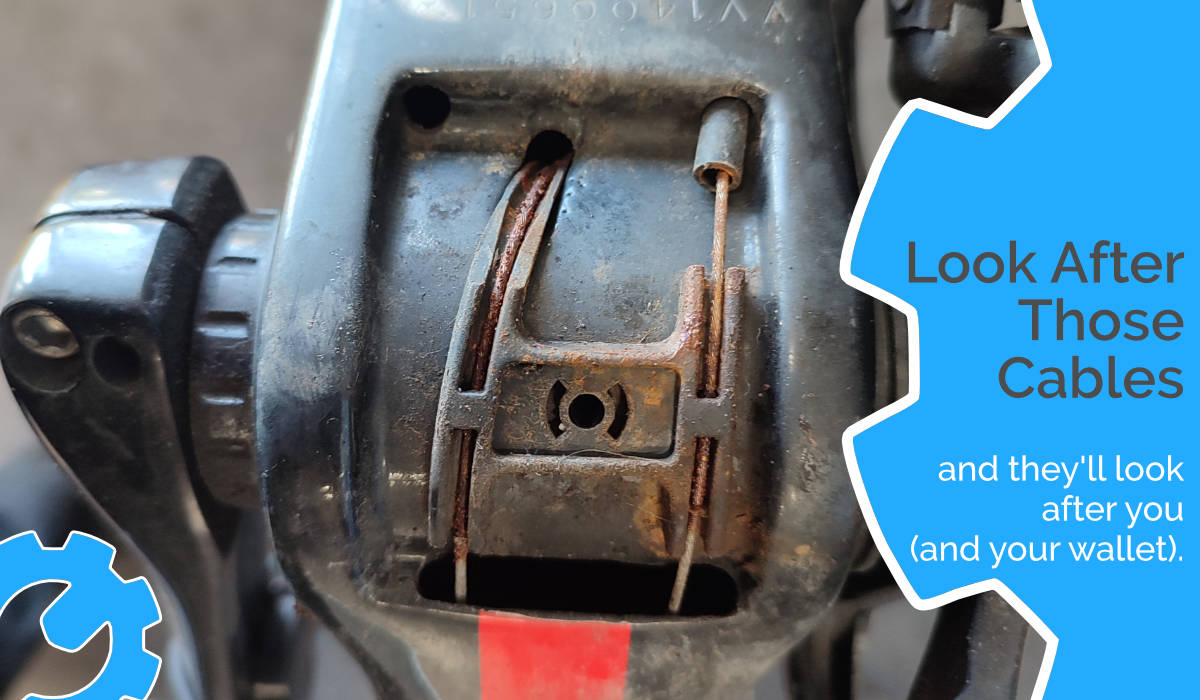Don't Let Your Cables Let You Down! Why Brake & Gear Cables Need Your Love
We often think about our chains, tyres, and brakes, but there's a quieter hero on your bike that's doing a huge amount of work and often gets ignored: your cables. These unsung heroes connect your shifters to your gears and your brake levers to your mechanical brakes, making sure everything works smoothly when you need it most.
This week in the workshop was a perfect reminder of just how important these bits of wire are, and what can happen when they don't get the attention they deserve.
The Hidden Damage: When Cables Snap or Fray
I had two cracking examples recently that really drove this home.
The first was a gear cable that was so corroded, it just snapped right inside the shifter. This isn't just an inconvenience; it meant taking the whole shifter apart, bit by tiny bit, just to fish out the broken end. What could have been a quick cable change turned into a much longer, more fiddly, and yes, more expensive job. All because that cable was left to rot away inside its housing.
Then there was a mechanical disc brake cable that was severely frayed. It was slowly but surely pulling itself through the brake caliper's clamp. Now, imagine if that snapped completely while you were bombing down a hill! That's an obvious high-risk situation that you absolutely want to avoid. It was a proper wake-up call for the customer about checking their bike over.
The Slow Killer: How Bad Cables Ruin Your Shifters
It's not just snapped cables you need to worry about. If your gear cables are corroded or full of gunk, you'll start noticing that it takes more and more force to shift gears. You're effectively fighting against the friction inside the cable housing.
What does this extra force do? It puts massive strain on the delicate internal mechanisms of your shifter. These bits aren't designed to withstand that kind of abuse every time you change gear. Over time, this will massively weaken the shifter internals, leading to premature failure. What started as a cheap cable replacement can quickly turn into needing a whole new shifter; they don't come cheap, and often only in pairs!
And like that snapped cable I mentioned, a corroded cable can give up the ghost when you least expect it, which can be both dangerous (especially if it's a brake cable!) and certainly ruin a good ride. No one wants to be stuck in one gear miles from home, or worse, with no brakes.
The Internal Cable Conundrum
To make matters even more complicated, many, many bikes these days come with internal cable routing. This looks super clean and tidy, but it also means that when a cable does get gunked up, corroded, or snaps, the job of replacing it just got a whole lot more involved. And more expensive! It's not just a case of pulling out the old and threading in the new. Often, it involves some careful fishing through the frame, sometimes even requiring specialised tools or temporary routing kits.

Cable Maintenance Best Practice: Get It Done!
So, how do you avoid these headaches? It's pretty straightforward, really:
- Lube 'em Up: A tiny bit of appropriate cable lubricant applied at the cable entry points can help keep things running smoothly and stop water getting in.
- Check for Fraying: Regularly inspect your visible cables, especially near the shifters and brake calipers, for any signs of fraying. A few broken strands are a clear warning sign.
- Tight Clamps: Make sure all your cable clamps are snug and holding the cable securely. For brake cables, this is absolutely critical.
- Above all else: Change Them Regularly! This is the golden rule. Cables are a wear-and-tear item. They corrode, they stretch, and they get gunked up. For most regular riders, I'd recommend getting your gear and brake cables (and their housings!) changed at least once a year, or more often if you ride regularly in wet or mucky conditions (so that's all of us!). It's a relatively inexpensive job that can save you from far more costly repairs and potentially dangerous situations.

Don't let neglected cables ruin your ride or your wallet. Give your bike the attention it deserves! If you're due a cable change, or just want me to check them over, get in touch!
And Finally... A Blast from the Past (with a Modern Twist)
I had a bike in this week that was a proper eye-catcher: a Schwinn Stingray. Now, this wasn't an original from the '60s, but a modern version that pays brilliant homage to the iconic look. If you don't know the name, picture the coolest bike from back in the day with those high-rise handlebars, the long banana seat, and those distinctive small wheels. It’s the bike that essentially kicked off the whole "chopper" craze and inspired the first BMX bikes.

But the best bit? This modern Stingray had been fitted with a brilliant e-bike conversion kit. It was brilliant seeing that iconic, retro-style machine zipping about with a bit of electric boost. It just goes to show you can put a motor on anything—and that a great design never truly goes out of style!
Happy cycling,
David @ Bike Spanner
